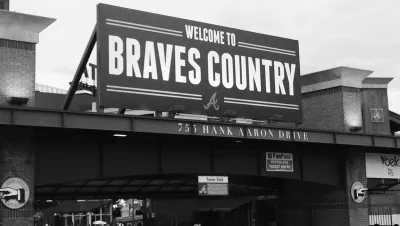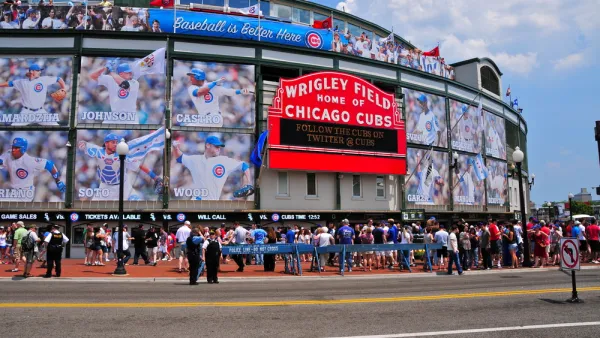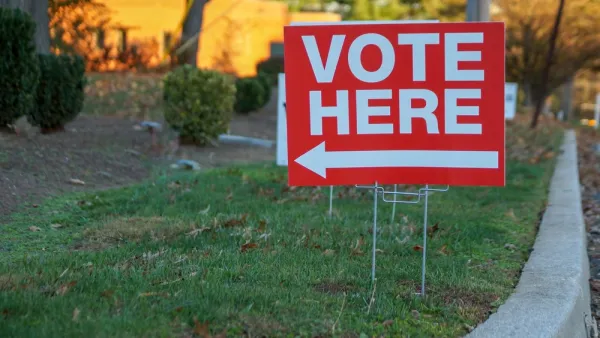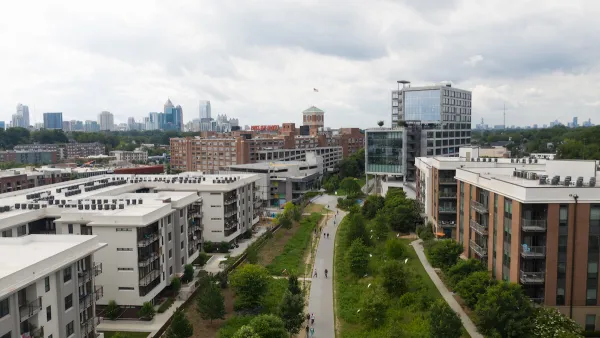The decision of where to locate ballparks, and to what extent the public should subsidize that location, can have ripple effects throughout the land use and transportation systems of a region.

Dan Hardy starts this exploration of ballpark locations by acknowledging the “debate about the wisdom of subsidizing private sector entertainment” but also that “there’s definitely a historic synergy between an urban ballpark and its environs.”
Hardy details the many varieties of case studies offered by the location of ballparks around the country—the most historic (Wrigley and Fenway) being located on transit lines and the recent trend of moving ballparks close to Downtown (starting in Baltimore, but also in Denver, San Francisco, and San Diego, for example).
The outlier of recent experience is Atlanta’s Major League Baseball team, which is in the process of moving to a suburban location—a decision that has inspired plenty of discussion (and consternation) about the choice. Hardy notes the possibility that because the majority of Atlanta’s season ticket holders live in the suburbs, “one can arguably suggest that the new stadium site would reduce total vehicle miles of travel, which is a key goal of balancing land use and transportation.”
FULL STORY: Take Me Way Out to the Ballgame

Analysis: Cybertruck Fatality Rate Far Exceeds That of Ford Pinto
The Tesla Cybertruck was recalled seven times last year.

National Parks Layoffs Will Cause Communities to Lose Billions
Thousands of essential park workers were laid off this week, just before the busy spring break season.

Retro-silient?: America’s First “Eco-burb,” The Woodlands Turns 50
A master-planned community north of Houston offers lessons on green infrastructure and resilient design, but falls short of its founder’s lofty affordability and walkability goals.

Test News Post 1
This is a summary

Analysis: Cybertruck Fatality Rate Far Exceeds That of Ford Pinto
The Tesla Cybertruck was recalled seven times last year.

Test News Headline 46
Test for the image on the front page.
Urban Design for Planners 1: Software Tools
This six-course series explores essential urban design concepts using open source software and equips planners with the tools they need to participate fully in the urban design process.
Planning for Universal Design
Learn the tools for implementing Universal Design in planning regulations.
EMC Planning Group, Inc.
Planetizen
Planetizen
Mpact (formerly Rail~Volution)
Great Falls Development Authority, Inc.
HUDs Office of Policy Development and Research
NYU Wagner Graduate School of Public Service




























